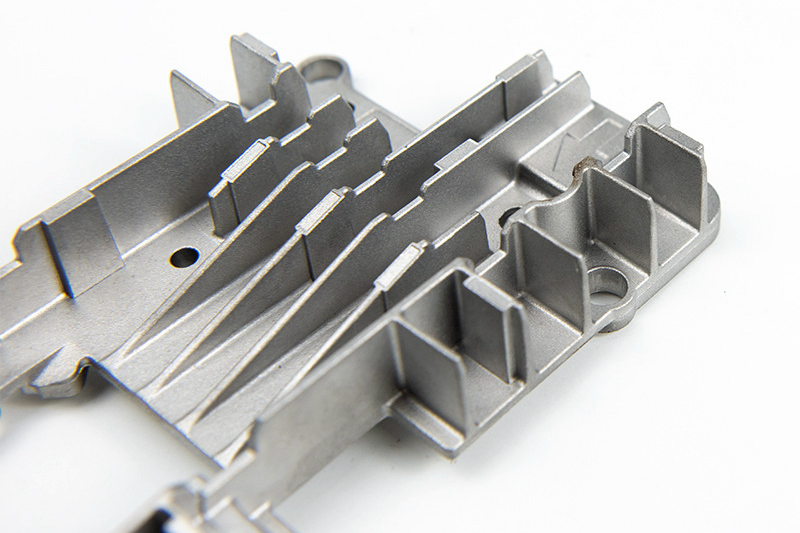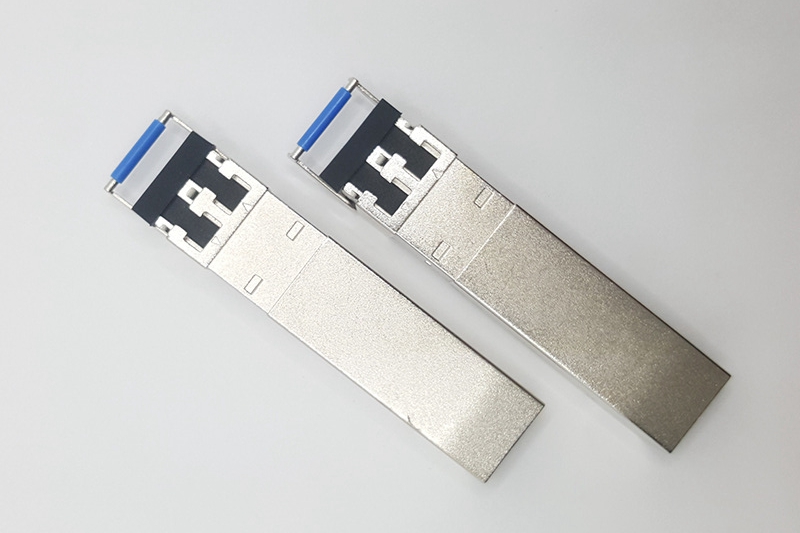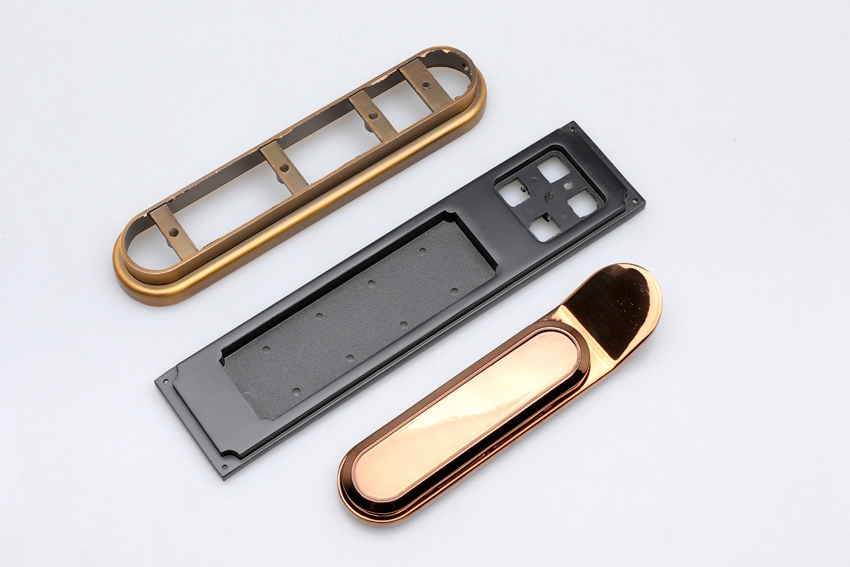Lightweight Structural Solutions for Automotive Industry
Introduction to Lightweighting in Automotive Manufacturing
Lightweight structural solutions are becoming a cornerstone in the automotive industry's evolution. As manufacturers face increasing pressure to reduce vehicle emissions, improve fuel efficiency, and meet stringent global regulations, weight reduction has emerged as a critical design objective across all vehicle classes.
In this context, integrating advanced materials and high-efficiency manufacturing methods enables automakers to engineer components that meet structural performance standards while minimizing mass. From aluminum die-cast housings to polymer-reinforced enclosures, the push for innovative solutions continues transforming how vehicles are designed and produced. These technologies are vital for developing electric vehicles (EVs), where reduced weight directly correlates to extended battery range and better thermal management.
To understand the full impact of material selection and structural optimization, one must examine the evolving landscape of the automotive industry, where lightweighting is no longer optional but essential.

Key Challenges in Automotive Structural Design
Balancing Strength, Safety, and Weight
In automotive structural engineering, weight reduction efforts often conflict with the demands of safety and rigidity. Traditional high-strength steels provide robust crash protection but add substantial mass to the vehicle structure. Conversely, lighter materials such as aluminum, magnesium, and composites require intricate design to achieve the same deformation control under dynamic loads. Structural stiffness, energy absorption, and fatigue performance must be carefully optimized to meet global crash standards without overdesigning components.
Engineering teams address this challenge through advanced FEA simulations, controlled wall thickness gradients, and strategic use of reinforcement ribs or inserts. The ability to reduce weight while preserving safety performance defines the success of lightweight structures.
Material Cost and Manufacturing Scalability
While lightweight materials offer performance benefits, their integration into large-scale production presents financial and logistical hurdles. High-performance alloys and composites generally have elevated material costs and may require specialized tooling, complex processing, or extended cycle times. These factors can limit their viability in cost-sensitive vehicle segments.
Furthermore, automotive platforms demand scalable solutions compatible with automated assembly lines and capable of meeting just-in-time supply models. Lightweighting initiatives must balance the trade-off between material performance, production economics, and design feasibility to ensure a successful and sustainable transition.
Materials for Lightweight Automotive Structures
Aluminum Alloys for Die-Cast Components
Aluminum alloys are widely adopted in automotive structural systems due to their excellent strength-to-weight ratio, corrosion resistance, and castability. Alloys such as A380, A356, and ADC12 are commonly used for parts like transmission housings, shock towers, and electronic enclosures. These alloys support high-pressure die-casting processes that allow thin-wall geometries and excellent dimensional control.
Aluminum's recyclability and thermal conductivity make it particularly suitable for electric vehicle (EV) platforms, where both weight savings and heat dissipation are critical. For large-volume production, aluminum die casting enables rapid manufacturing of precision structural components with complex geometries. In particular, A380 aluminum offers a reliable balance of fluidity, strength, and cost efficiency.
Magnesium and Zinc Alloys for Compact Structures
Magnesium and zinc alloys provide additional opportunities for reducing structural mass, particularly in low-load or compact applications. Magnesium, with a density about 35% lower than aluminum, is well-suited for seat frames, housings, and brackets. Although heavier than magnesium, zinc alloys enable ultra-precise casting of small, detailed parts with excellent surface quality and dimensional accuracy.
These materials are often employed in electronic control modules, hinge supports, and intricate mounting structures. As demand grows for lightweight EV interior and chassis subsystems, zinc alloy components remain a cost-effective and formable option.
Advanced Plastics for Non-Load-Bearing Applications
For enclosures, bezels, ducts, and interior trims, engineering plastics such as PA66, PBT, and PC+ABS offer significant weight reduction while maintaining dimensional stability and design freedom. These materials are typically used in injection molding processes to produce complex parts in high volume.
Glass fiber-reinforced grades can provide additional stiffness and thermal resistance, while flame-retardant formulations meet safety requirements for electrical modules and cabin interfaces. Applications like fuse boxes, battery management enclosures, and sensor housings frequently rely on PBT components to achieve the necessary combination of low weight, durability, and cost control.
Lightweight Manufacturing Technologies
High-Pressure Die Casting for Thin-Wall Structures
High-pressure die casting (HPDC) is a preferred manufacturing process for producing lightweight, thin-walled structural components with high dimensional accuracy and surface quality. It allows complex geometries with minimal post-processing and supports using aluminum and magnesium alloys to reduce component mass significantly.
HPDC is especially suited for parts such as EV motor housings, heat sinks, and display back covers. Manufacturers can achieve fast cycle times with excellent repeatability by injecting molten metal into a hardened steel mold at high speed and pressure. A notable application is the development of thin-walled aluminum die castings, where strict thickness control and flow path design ensure strength without adding unnecessary weight.
Metal Injection Molding for Micro-Mechanical Components
Metal Injection Molding (MIM) merges the design freedom of plastic injection with the strength of metal, enabling the production of small, intricate metal components with excellent mechanical properties. It is ideal for applications where traditional machining or casting is impractical due to size, geometry, or cost constraints.
Automotive uses include locking mechanisms, miniature actuator parts, and sensor housings. MIM supports materials like stainless steel, low alloy steel, and titanium, which meet automotive performance standards. The metal injection molding process is highly scalable and supports the high-volume production of lightweight, high-strength structural components for safety and functional assemblies.
CNC Machining for High-Precision Lightweight Parts
CNC machining is critical in finishing, prototyping, and producing lightweight parts that require precise tolerances, surface finishes, or unique geometries. It is particularly effective for hybrid structural systems where cast, molded, or extruded blanks require secondary processing.
Applications range from mounting frames and motor housings to EV structural brackets, where machining ensures component interfaces meet tight alignment and performance requirements. For new product development and functional prototyping, CNC prototyping services deliver fully functional lightweight components with rapid turnaround, enabling design iteration before mass production.
Structural Applications of Lightweight Components
Body Panels and Covers
Automotive exteriors benefit significantly from using lightweight materials in non-load-bearing body panels such as fenders, hoods, tailgates, and display covers. Die-cast aluminum and thermoplastic composites reduce vehicle curb weight while maintaining structural form and aesthetic standards. These parts must also resist thermal expansion, UV degradation, and vibration stress.
A key example is the adoption of thin-wall enclosures for infotainment displays and digital instrument clusters. These require precision geometry and EMI shielding, achieved through materials like magnesium or PC+ABS hybrids. New advances in lightweight enclosures have enabled the integration of electronics, mounts, and heat sinks into a single molded unit.
Battery Housing and Mounting Frames
Battery enclosures represent one of the heaviest and most safety-critical structures for electric vehicles. Engineers must design them to withstand impacts, contain thermal events, and maintain mechanical stability under vehicle load. Lightweight solutions combine extruded aluminum frames with cast or stamped alloy panels.
Innovative manufacturing methods have enabled modular, weight-optimized battery packs. The design often integrates cooling channels, mounting features, and shielding. Leading EV programs adopt battery component solutions using aluminum casting or sheet-metal assemblies that balance performance with manufacturability.
Motor and Drive System Structures
EV traction motors, reduction gearboxes, and inverter assemblies benefit from lightweight, thermally conductive housings. Due to their mechanical stability, heat dissipation, and vibration-dampening characteristics, cast aluminum and CNC-machined magnesium are standard materials.
Motor mounting brackets and drive system casings often feature weight-saving designs with ribbed reinforcement, integrated mounts, and precise alignment interfaces. These structures demand tight geometric tolerances and thermal cycle durability. Motor components produced with lightweight alloys enhance vehicle range and powertrain efficiency.
Safety-Critical Lock and Mounting Systems
Locking mechanisms, latches, and door reinforcement systems require materials that combine reduced weight with mechanical reliability. As vehicle doors and liftgates shift toward aluminum and composite materials, associated mounting structures must adapt to lighter substrates.
Precision die-cast, or MIM components, can produce high-strength, low-profile locks that integrate with sensors or actuators. These parts must meet crash and fatigue standards while maintaining cost-effectiveness. Advanced locking system components ensure security and occupant protection without compromising vehicle mass.
Case Study: Lightweight Structural Components in New Energy Vehicles (NEV)
In a recent new energy vehicle (NEV) development program, an OEM tasked its engineering team with reducing structural mass in a compact SUV platform while meeting performance, durability, and cost constraints. The objective focused on core components: motor housing, battery frame, and body mounting structures.
The motor enclosure was redesigned using a rib-reinforced A380 aluminum die-cast shell. Compared to the original cast iron design, this solution reduced weight by 36% while improving thermal dissipation. Precision CNC post-machining ensured alignment tolerances within ±0.02 mm to maintain drivetrain geometry. This aligned with design principles outlined in engine and transmission component optimization for electrified platforms.
Engineers adopted a hybrid frame for the battery system, integrating extruded 6061-T6 aluminum rails with thin-wall cast brackets. The housing design incorporated crush zones, coolant routing, and EMI shielding in a modular structure. The new design saved 18 kg per vehicle compared to traditional welded steel enclosures. These innovations align with broader lightweight structural solutions emerging across EV platforms.
Mounting frames for electronic control units were transitioned from stamped steel to PBT-GF30 injection-molded modules, integrating fastener bosses and cable routing. This substitution reduced part count and saved tooling costs for complex sheet metal assemblies while improving vibration resistance and electrical insulation.
Altogether, the redesign achieved a total weight reduction of 42.6 kg—translating to a 3.8% improvement in range per charge and reduced vehicle-level NVH. This case illustrates how multi-material design, process integration, and component-level reengineering enable successful lightweighting in EV platforms.
Future Trends and Material Innovations
As the automotive industry accelerates toward electrification and autonomous platforms, the demand for next-generation lightweight structural materials continues to grow. Future developments focus not only on reducing mass but also on enhancing functionality, manufacturability, and sustainability.
One key area is the adoption of multi-material assemblies—combining metals and polymers in hybrid components. For example, structural inserts made from high-strength steel can be over-molded with plastic to create light and crash-worthy parts. These solutions support modular design philosophies and reduce part counts.
Another trend is using advanced composite materials, such as carbon fiber-reinforced thermoplastics, in critical load-bearing areas. While cost remains a constraint, automation in composite molding and thermoplastic welding offers promise for broader adoption. Structural foams and sandwich panels with aluminum skins are also under investigation for floor and roof systems.
Material scientists and product designers are increasingly focused on recyclability and lifecycle performance. Lightweighting strategies now consider disassembly, reuse, and CO₂ footprint—linking directly to OEM sustainability goals. As highlighted in material versatility, the ability to integrate diverse materials and processes is critical to future vehicle innovation.
Looking forward, digital engineering tools, such as generative design and topology optimization, will drive radical weight reductions by reshaping components based on load paths rather than legacy geometries. These digitally derived structures, produced via additive manufacturing or optimized casting, could define the next generation of automotive platforms.
Conclusion
Lightweight structural engineering has become a defining factor in the success of modern automotive design. Whether addressing regulatory targets for emissions or unlocking greater EV range, weight reduction directly influences vehicle efficiency, performance, and sustainability.
This transformation is driven by the synergy between material science and precision manufacturing, from aluminum die casting to plastic injection molding and CNC finishing. However, the challenge lies in selecting the right materials and designing for manufacturability, durability, and cost-effectiveness at scale.
For OEMs and Tier 1 suppliers, embracing lightweight structural solutions requires a system-level perspective. Integrating design, simulation, prototyping, and manufacturing from the earliest development phases. As vehicle architecture evolves, so must the strategies for optimizing every gram without compromising strength or safety.
The future of mobility is light, bright, and efficient—and it begins with engineering structures that support it.



